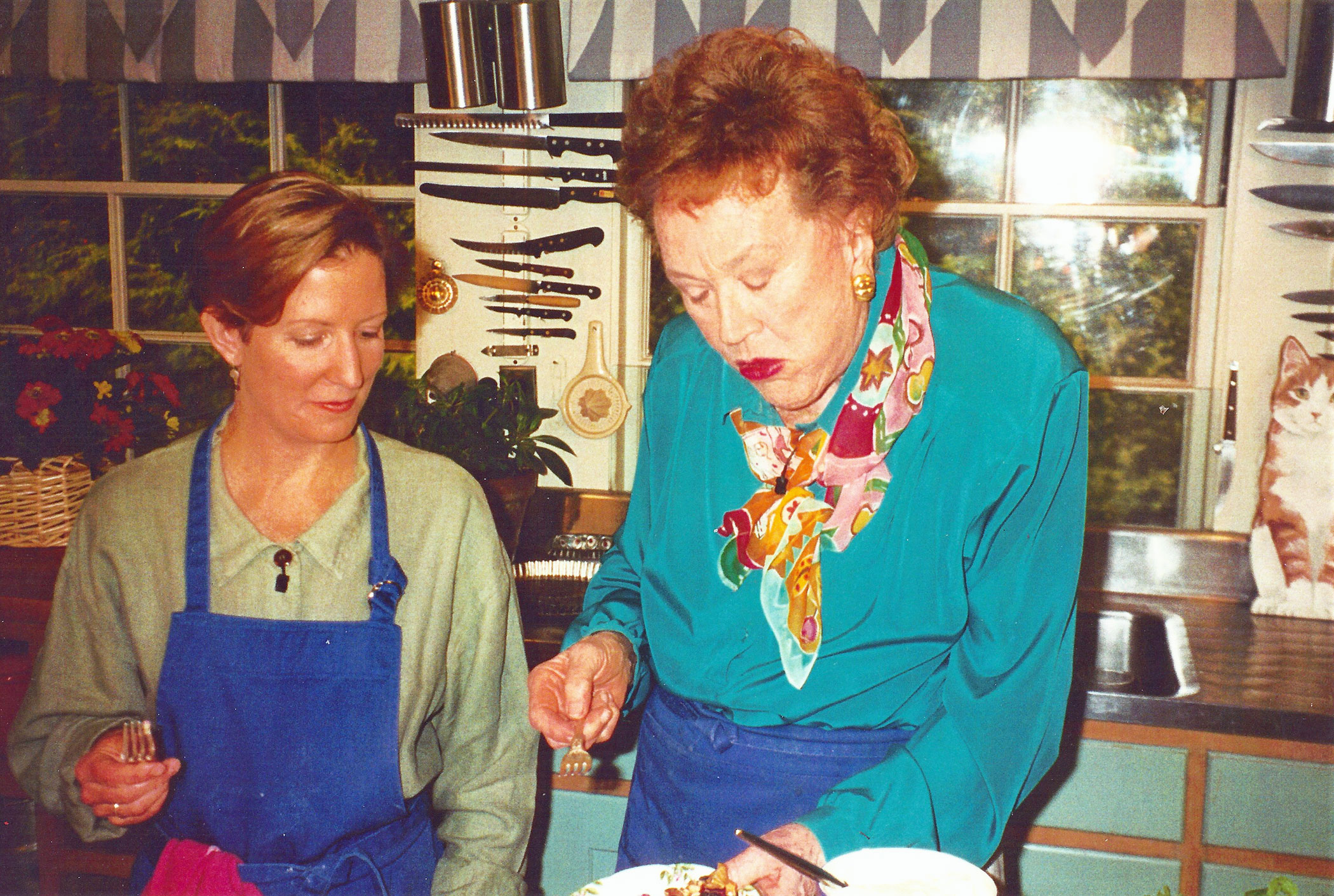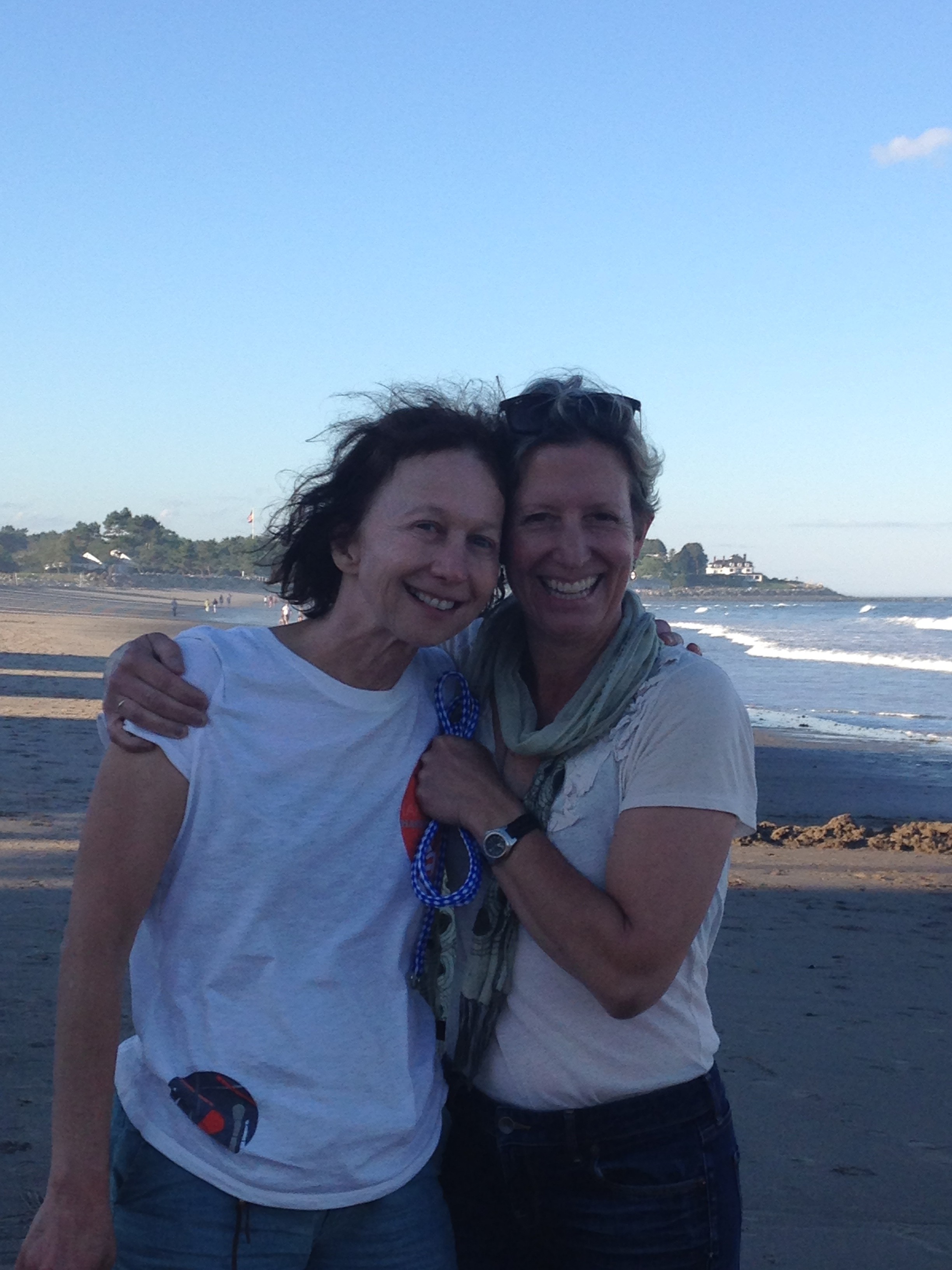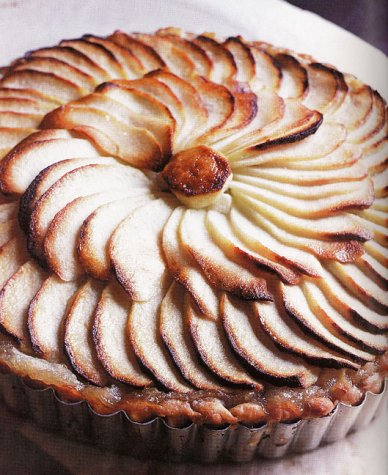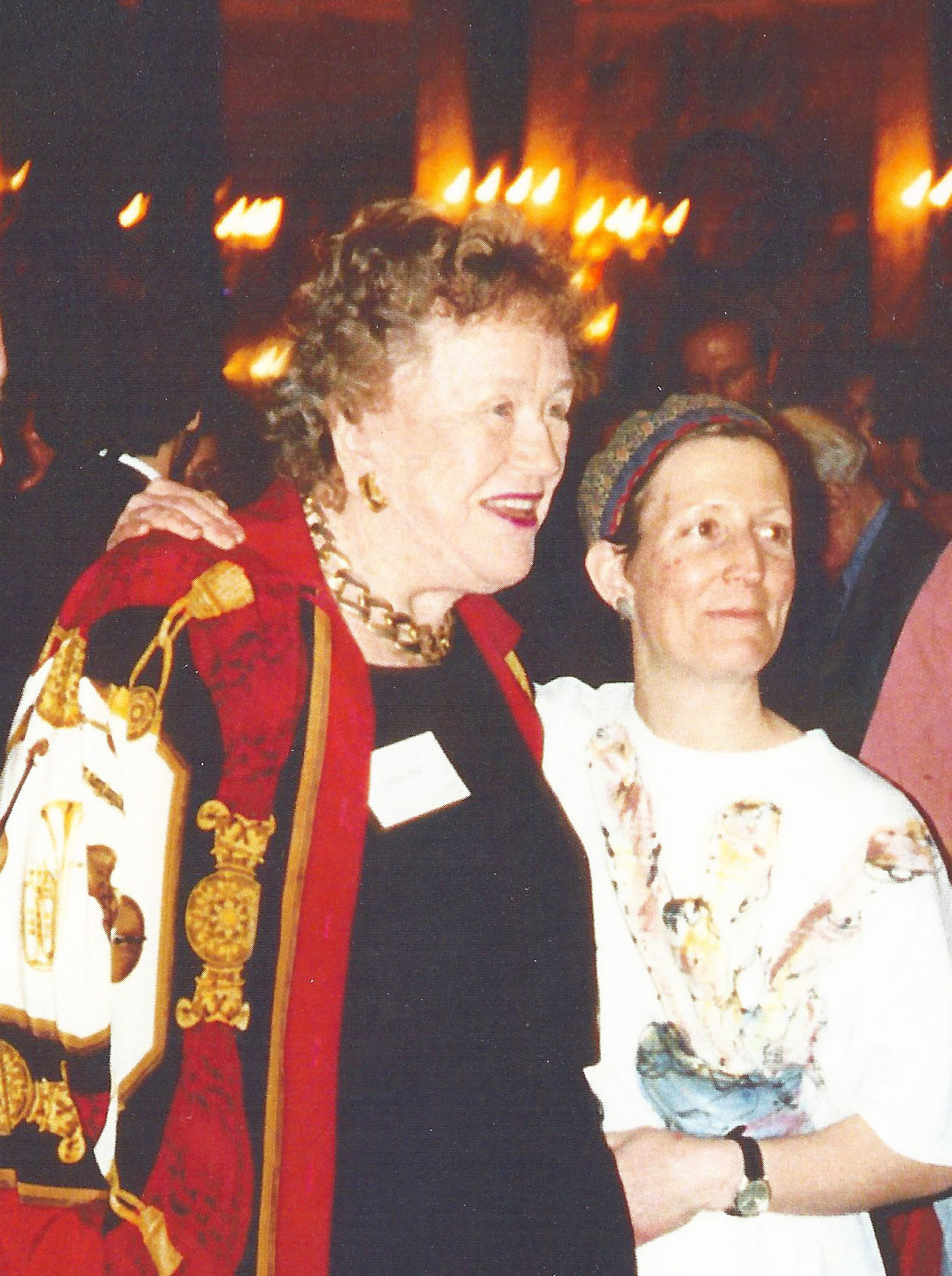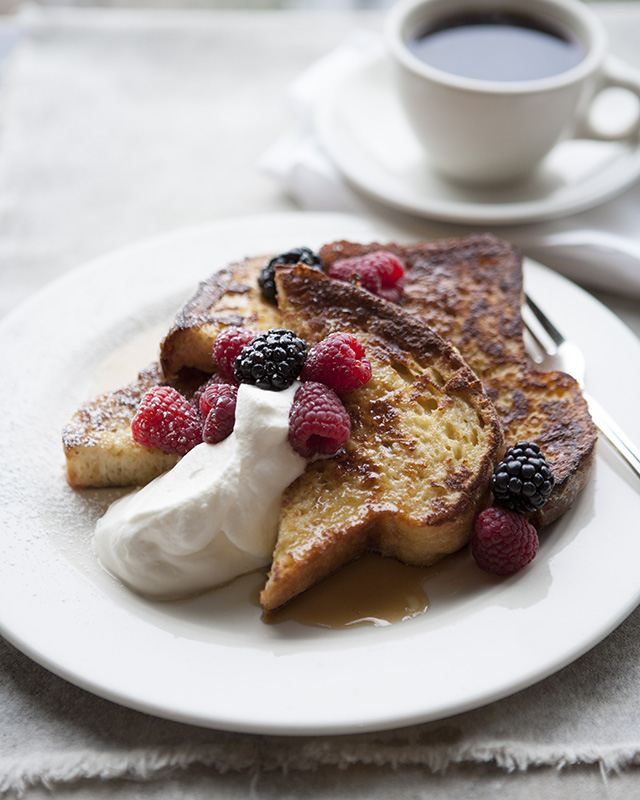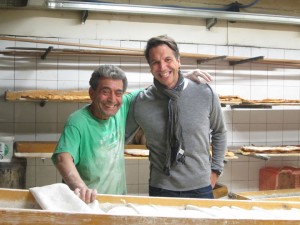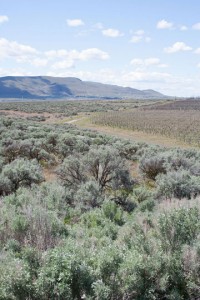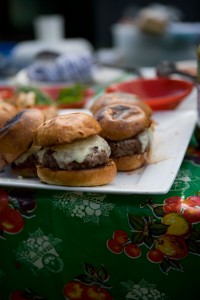One of the bakers here at Macrina noticed that Julia Child’s birthday was coming up on August 15th and suggested I write about my experience filming Baking with Julia in 1996. It just so happens I’m currently in Boston visiting my dear friend Susan Regis, a super host as well as a James Beard Award-winning chef so the walk down memory lane is timely in many ways.
Susan accompanied me to Julia Child’s house for the filming of my episode that memorable summer day in 1996. Susan, who has presided over some of the most storied Boston kitchens, knew Julia Child through the Cambridge food network. I was glad my supportive friend was with me because I was going to cook in Julia Child’s kitchen. The Julia Child’s kitchen! It still gives me goose bumps to think about it. I’d done cooking classes before, but not on television and not standing next to Julia Child’s famous pegboard. It was a dream come true, and yet I was absolutely terrified.
I’d met Julia Child briefly back in the 80’s when I cooked at Jasper’s, a great restaurant on the Boston waterfront in its day. I was very surprised and honored when I got a call and heard that Julia Child was interested in featuring me in an episode of Baking with Julia, the show that would go on to win an Emmy Award and a James Beard Award. Macrina had only been open for three years. She traveled to Seattle, visited the bakery, and loved it. I wanted to do bread, my true love, but they had already lined up several very prominent bakers to be on the show. Julia loved our pastries and convinced me to make tarts.
When the time came, I flew to Boston and with Susan in tow made my way to Julia Child’s imposing Cambridge clapboard house. The house was bustling with activity. There was a prep kitchen set up in the basement and her kitchen was transformed into a studio, full of lights, people, and cameras. There was a make-up artist, the cookbook writer Dorie Greenspan, who was writing the companion cookbook to the show, the producer Geoffrey Drummond, and several others bustling about.
It turned out that the night before we were to film there were some electrical problems and the air-conditioning had gone out. They’d had to bring in a generator and had hooked up an ad hoc cooling system. Silver accordion ducts poked through windows and out of hallways blowing cold air. Those cameras put out a lot of heat. Even with all their efforts it was still mid-eighties in that kitchen. It didn’t feel like a good omen.
I planned to make two crusts, our classic pie crust, and our crostata crust. With the pie crust I would make three tarts, a French Apple Tart, a Baked Yogurt Tart with Blackberries and Almonds, and a Blueberry Nectarine Tart. With the crostata crust I would make a Raspberry Fig Crostata. As filming started, we found the dough had to be kept in a cooler between takes. It was too hot and tart dough can be a prickly creature in warm weather. My nerves might have overwhelmed me in this less than ideal scenario if Julia Child wasn’t so graceful. She asked me instinctive questions, leading me along, smoothly adding details to help the home cook. I relaxed in a few minutes.
The rest of the day was a blast, even with the hot kitchen. The tarts came out perfectly! I even got to the crostata. Evidently I was fast, and we managed to film more than enough for one show. So I got a bonus half-show that just focused on the crostata. All of the humor and wit and personal connection that you see from Julia Child on the show came across even more between takes. It was unbelievably stimulating and thrilling to be there.
As I packed up my stuff, tired, hot, and exhilarated, little did I know that the best part of the day was yet to come. Susan invited Julia Child over to her house for a barbecue on the roof. Susan lived in a North End brownstone, four flights of stairs to the roof. Julia Child was 84 years old then, her husband Paul had passed away two years earlier. To my great surprise, Julia accepted the invitation. Geoffrey Drummond and Dorie Greenspan accompanied her. She scaled the four flights just fine, took a seat in an Adirondack chair and held court with a roof deck of people, most half her age. She talked of meals and wines, recalling nuances of flavor and special dishes fondly. What a memory she had. I think we grilled pizzas and I know there was lots of great food. I barely remember all that now. What I remember is Julia Child, sitting on the roof sharing her passions, not at all pretentious, incredibly approachable, humble, and full of grace.
That experience is one of the great memories of my life. The cookbook turned out beautifully. I was so pleased that in addition to my tarts and crostata they included my potato bread as well. It’s so much fun to be back at Susan’s recalling that day.
Happy Birthday, Julia Child. You will never be forgotten.
Leslie Mackie
Watch Baking with Julia featuring Leslie Mackie http://video.pbs.org/video/2250839787/

